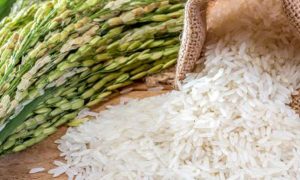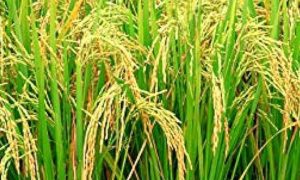Increased rice imports may still boost farmers’ competitiveness fund

MANILA, Philippines — The Philippines is expected to become the world’s largest rice importer in 2024, with imports projected at 4.6 million metric tons, up 27% from last year. Finance Secretary Ralph Recto indicated that increased rice imports due to reduced tariffs could mitigate the P22 billion revenue loss and support the Rice Competitiveness Enhancement Fund. The government plans to cut rice import tariffs from 35% to 15% and aims to boost domestic rice production through infrastructure investments.
MANILA, Philippines — Greater importation of milled rice encouraged by tariff cuts can offset expected forgone revenues, auguring well for the Rice Competitiveness Enhancement Fund (RCEF) which is funded by the tariff revenues, according to Finance Secretary Ralph Recto.
“That’s a possibility. However, what is important is to reduce rice prices to benefit consumers, especially low-income Filipinos,” Recto said in a text message on Friday.
In a report released by the US Department of Agriculture’s (USDA) Foreign Agricultural Service, the Philippines’ rice imports are expected to reach 4.6 million metric tons (MT) for the year, making the country the largest rice importer in the world.
The 2024 estimate is higher by 27 percent from the 3.6 MT imported rice last year.
Earlier this week, Recto estimated revenue losses from the rice tariff cut could reach P22 billion.
With the projected increase in the volume of rice importation, Recto said that tariff revenues from the tariff would be used to boost rice production.
Revenue loss from tariff cuts
“The government is committed to reducing rice imports by increasing rice production by investing in irrigation, post-harvest facilities, and others,” he said.
Tariff collections from imported rice are directed into the RCEF, as required by Republic Act No. 11203 or the Rice Tariffication Law (RTL).
The National Economic Development Authority (NEDA) Board last week agreed to reduce tariff rates of rice imports to 15 percent from 35 percent. President Marcos is set to issue an executive order to implement such a reduction.
Asked whether he expects any delays related to the EO, Recto emphasized that the government should act quickly to bring down inflation and help farmers increase their productivity.
Inflation in May slightly quickened by 3.9 percent from 3.8 percent in April, while rice inflation moved at a slower pace at 23 percent from 23.9 percent.
For 2024, the Department of Agriculture’s budget stood at P208.58 billion, however, the agency seeks to double its allocation amounting to P513.81 billion in 2025. INQ
Source Link : https://business.inquirer.net/464010/increased-rice-imports-may-still-boost-farmers-competitiveness-fund














